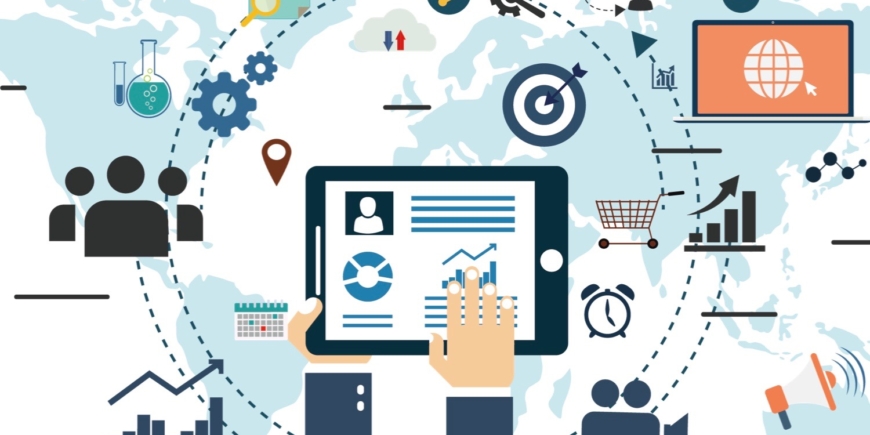5 key trends that will reshape the Logistics industry in 2021’s second half
The Covid pandemic has hit the supply chain, accelerating the growth of e-commerce. At the same time, these effects have altered the customers’ behavior after only 1 night.
In this situation, everything has changed constantly by the hour, the only thing that can be certain is “Nothing is certain”. Before these fluctuations of the market, businesses are forced to change to adapt. Change from the application of automation to managing the warehouse with data or even changing the way you work, redefining the role of people in the supply chain.
Here are the trends that have reshaped the supply chain in the second half of 2021:
Fast delivery is considered the criterion that the whole industry is aiming for
This is not a new story. However, there are still many businesses that don’t care so much. There are also some businesses that make this request an important goal, but when they encounter a certain problem, they “click their tongue” to ignore it with the thought “Customers have already spent money, then quickly or slowly they will still receive the goods”. However, believe me, if this situation persists, you will lose these customers.
Besides, there are also many businesses that focus on fast delivery. They set a goal that customers can receive goods within the day, even an e-commerce platform in Vietnam has conveyed the message “Receive goods in just 2 hours”. That’s it, receiving goods has gradually become an “instant noodle” dish, if left for a long time, it will no longer taste good and no longer have much value.
However, building a supply chain smart enough, modern enough to meet this demand of customers has become a concern of every business.
- So how have Vietnamese businesses caught up with this fast delivery trend?
The way many businesses are implementing it is to build warehouses in specific locations, allowing warehouse teams to provide a fast, efficient delivery solution. These warehouses are built as stand-alone, flexible, and cost-effective operations. Besides, many businesses have begun to focus on optimizing the supply chain to meet the fast delivery customer’s demand.
Building automation system
- Will consumers continue to shop online?
- Will they return to traditional purchasing methods?
- How have their expectations changed?
These are the questions that force managers to analyze and find the answers, the answers to what’s going on, and the answers to future changes.
- Why do businesses have to worry about these problems?
Obviously, the presence of Covid has completely changed the customers after only one night. Then there is no guarantee that customer behavior will be stable in the future.
The only solution that ensures agility and responds to requests from customers. To do that, businesses are gradually providing flexible and automated services to customers. There are many different forms available today, from (AGVi) which can transport non-chargeable goods quickly, to autonomous mobile robots (AMRs) that can support a wide variety of tasks and work closely with people. Analysis of warehouse data
Analysis of warehouse data
Many businesses have switched from traditional warehouse management to centralized data management. Building a data ecosystem can help businesses control the entire operation of the chain, capture real-time changes, and make timely decisions, limiting risks.
In the long term, centralized data management brings even more value to businesses. In addition to making data management more centralized and neat, it also provides information about customers’ behavior, preferences, and habits to predict their future behavior and have plans for care
Raising awareness and changing management
Social distancing has brought businesses to a common context that is to limit interaction activities between employees. Besides, the logistics industry is also facing a serious shortage of labor resources. This challenge has become even greater amid a spike in e-commerce orders.
These changes have forced business managers to change the way they manage. Undoubtedly, this experience will accelerate plans to change manual operations with innovative technologies. As a result, businesses will save time and have no interruptions in operation.
Working more flexibly
Due to the impact of Covid, many enterprises have had to choose the option “work from home” for employees. At that time, everyone has to change the flexible way of working to be able to collaborate better remotely. Even if there are no more barriers because of Covid, the choice of flexible working from home will also help many businesses optimize their infrastructure investment costs and better manage them thanks to the development of e-commerce. Besides, this change will also free up valuable space in the warehouse, to add more capacity at no extra cost. The flexible working method is being widely applied abroad and has also started to gain more attention in Vietnam in the last 2 years.
Besides, this change will also free up valuable space in the warehouse, to add more capacity at no extra cost. The flexible working method is being widely applied abroad and has also started to gain more attention in Vietnam in the last 2 years.
Obviously, the effects of the Coronavirus and the development of e-commerce have had an impact on logistics businesses. These effects will not end immediately, and may even have more impact in the future. Therefore, to develop and stand firm in the market, businesses need to change to adapt and accept completely new technologies and systems to optimize operations in the chain. Not only in the present but in the future, businesses need to be ready for any change.







